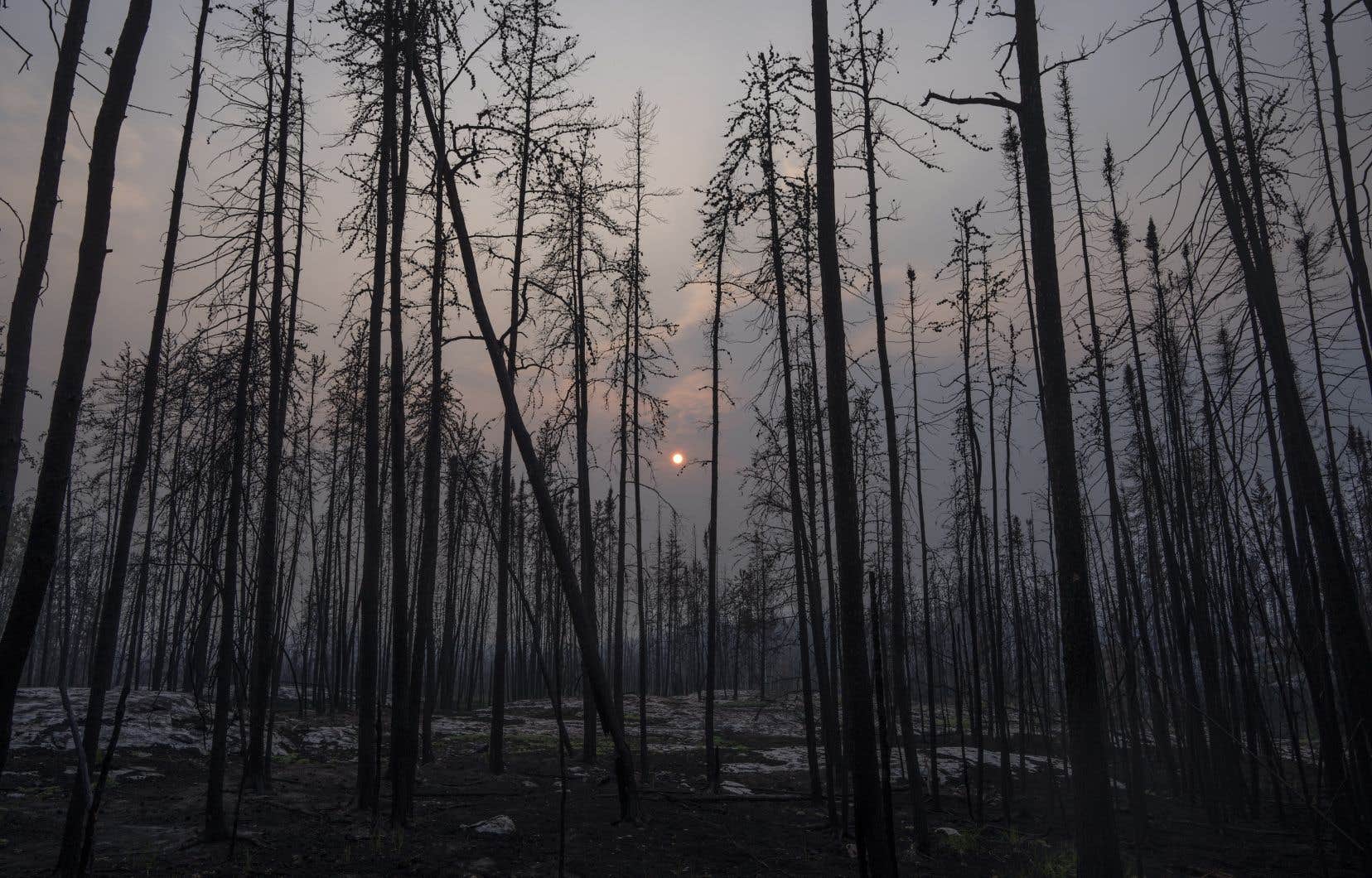Unprecedented wildfires have disrupted the lives of thousands of people from coast to coast this year, breaking records for total area burned.
Canada’s wildfires were the top choice of 35 per cent of respondents to The Canadian Press’ annual poll to determine the “top news event of 2023.”
An unusually warm and dry winter across much of the country set the stage for a wildfire season that drove 200,000 people from their homes.
One of the first communities evacuated was Evansburg, a hamlet west of Edmonton, on April 29. Evacuations for other localities were quickly ordered in the following days.
On May 29, fires in Nova Scotia grew out of control — which experts say is a worrying signal for the rest of Canada. “If Halifax can burn, any place can burn, and that baffles us all,” said John Vaillant, author of an award-winning book on climate change and fires.
A “heat dome” and extremely dry forests fueled the fire on the outskirts of Nova Scotia’s capital. Homeowners, surprised by the speed of the spread, found themselves confronted with monster traffic jams as they tried to flee their neighborhood.
On June 8, during a debate in the House of Commons, Prime Minister Justin Trudeau declared: “Canada is burning. »
And the impact was not limited to our borders. Wildfires sparked by lightning in Quebec made international headlines as smoke spread south, giving Toronto some of the worst air quality in the world and forcing the cancellation of Major League Baseball games as far away as Washington, D.C.
The Quebec Fire Protection Society estimated that more than 700 fires burned about 51,000 square kilometers of land, more than SOPFEU had ever recorded in a single season.
In Quebec, nearly 27,000 residents of around thirty municipalities had to be evacuated last summer, threatened by flames or inconvenienced by dense smoke. The most affected were Chibougamau, Sept-Îles, Lebel-sur-Quévillon, Lac-Simon, Mistissini, Maliotenam, Oujé-Bougoumou, Chapais, Normétal and several communities in the Eeyou Itschee Baie-James territory, indicates SOPFEU.
Yellowknife evacuated
Fires also ravaged the Canadian North. About 70% of the Northwest Territories’ population has been displaced at some point in 2023. When flames threatened Yellowknife, the territorial capital’s 20,000 residents were ordered to leave on August 16 . People lined up at the airport to board planes while others embarked on marathon trips to Alberta and other parts of the country.
The fire approached Yellowknife, but did not enter it; after three weeks, residents were allowed to return home. Territorial elections have been postponed for six weeks, until November.
Meanwhile, British Columbia was also enduring its worst wildfire season on record, with around 400 homes destroyed and more than 2.8 million hectares burned.
Drought-fueled fires and strong winds struck West Kelowna on the shores of Okanagan Lake late at night in mid-August.
The fires also caused a tragic loss of life: six firefighters in British Columbia died, including four killed in a road accident while returning home after a two-week deployment in the forest.
Thousands of Canadians suffered long-term economic losses and began a grueling odyssey to rebuild their lives after losing everything from vehicles to wedding photos.
“Typically, wildfire season is seen as a problem in British Columbia with implications for Alberta. But it has been proven that the 2023 wildfires are now a national problem and a harbinger of Canada’s new normal,” wrote Dawn Walton, editor-in-chief of CTV Calgary, in her response to the poll. national agency.
“Wildfires will intensify as climate change increases. This will soon become the biggest news story in the country,” commented Richard Dooley, supervising producer of Global News in Nova Scotia.
These large fires were the first choice of 35% of respondents to the poll conducted in news media across the country, in English and French. Inflation was chosen by 25% of respondents and the housing crisis by 21%.
If we examine the results from French-speaking media only, respondents instead chose inflation at 41%, the housing crisis at 23.5% and forest fires at 18%.
“Gramping inflation and the rising cost of living have not only occupied the media space, they have been — and continue to be — at the heart of the concerns of a growing number of Quebecers and Canadians who suffer from their impacts on a daily basis,” wrote Jean-Philippe Pineault, general director of information at Noovo Info and Bell Media.
